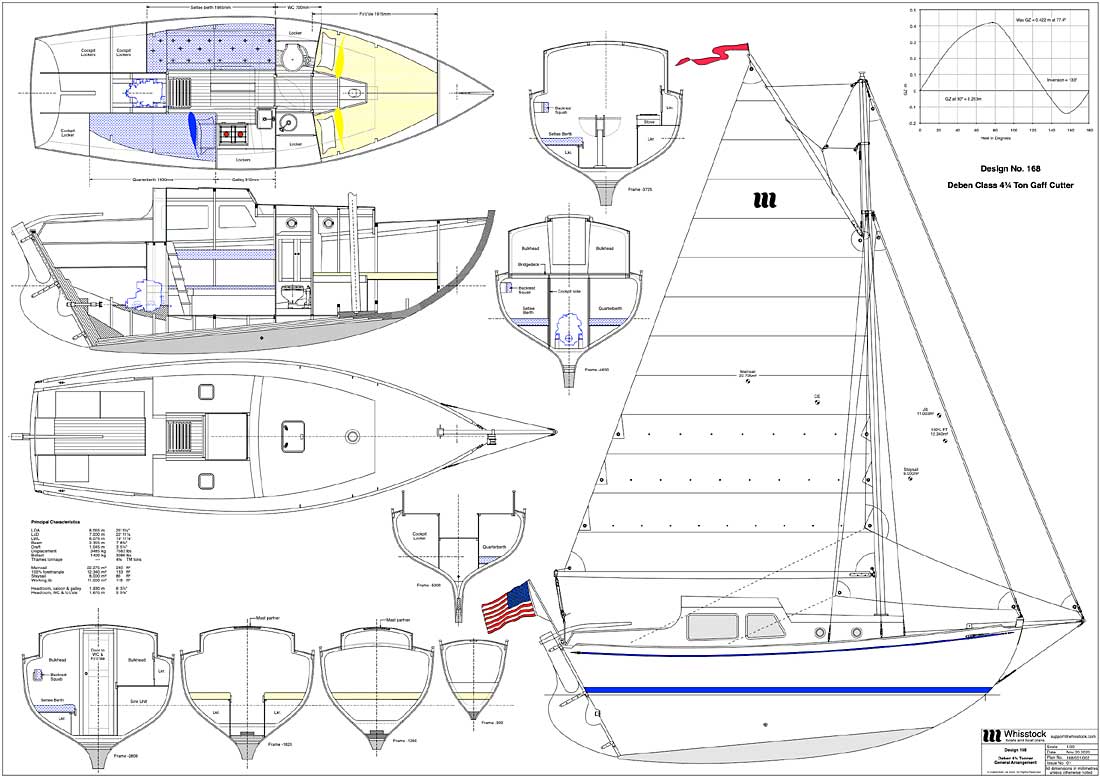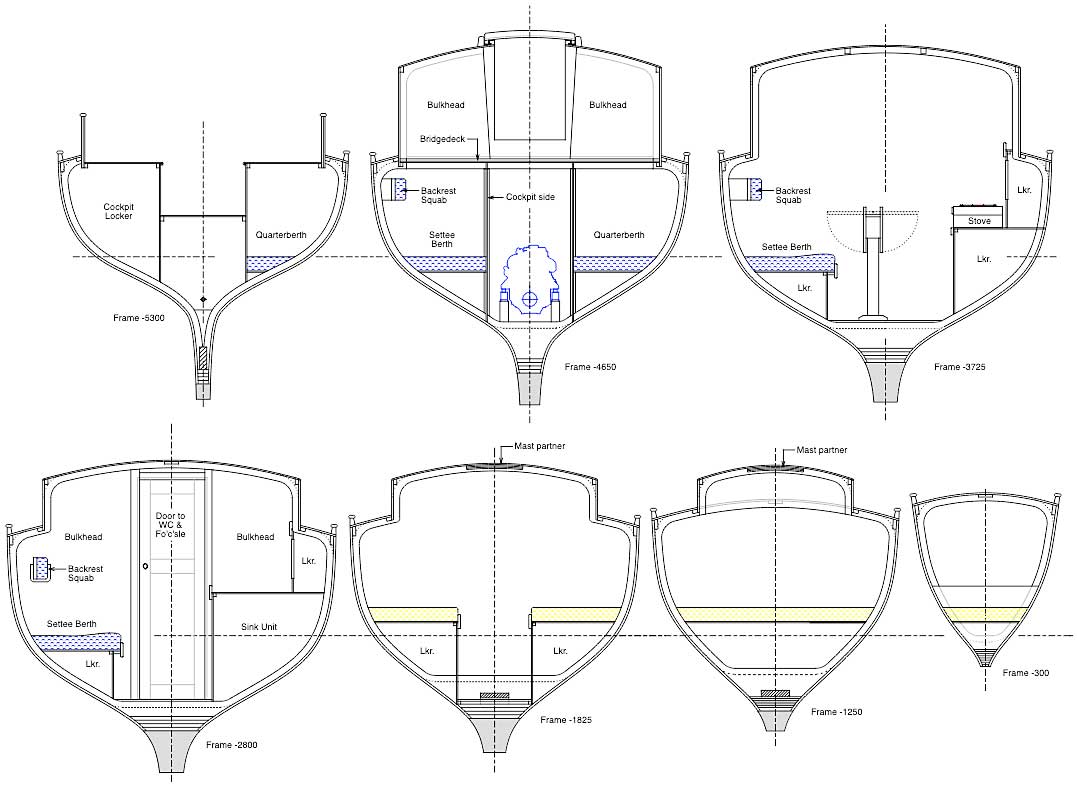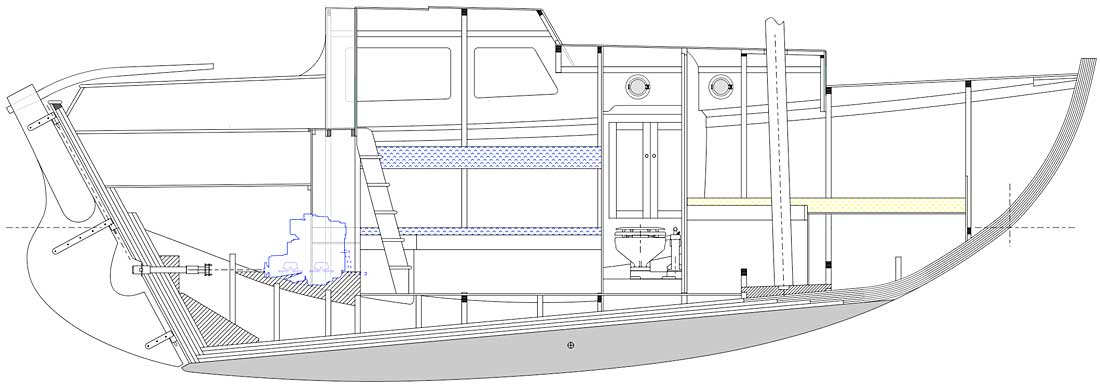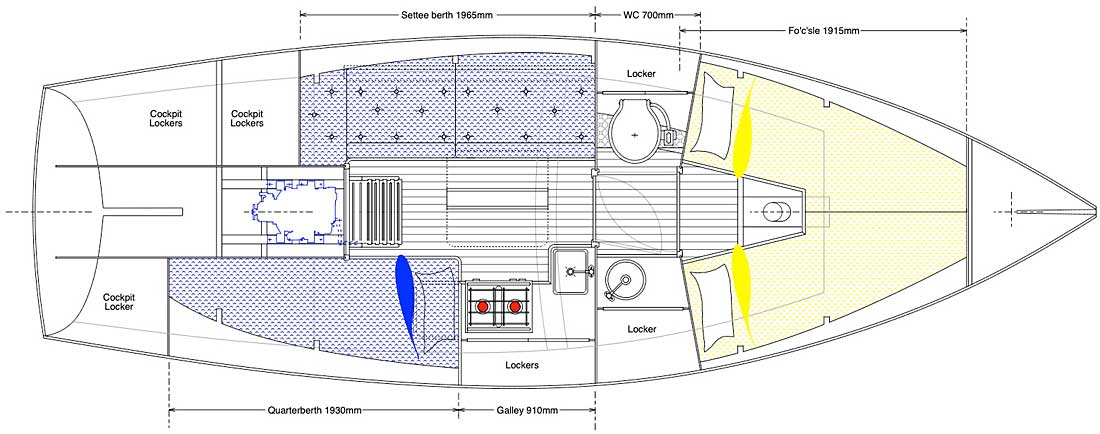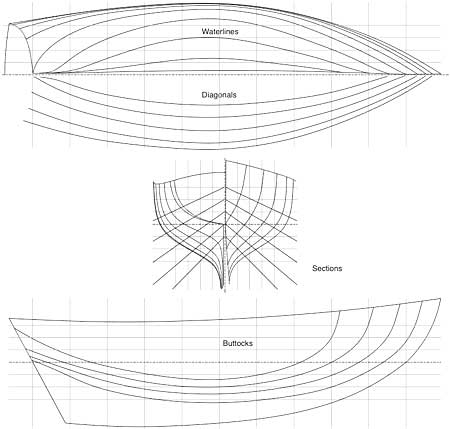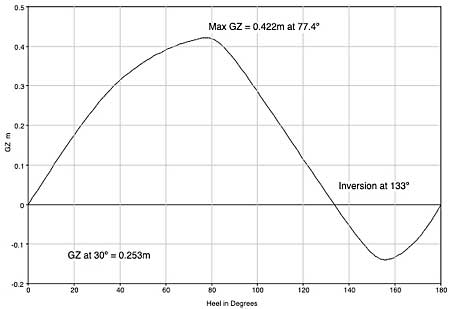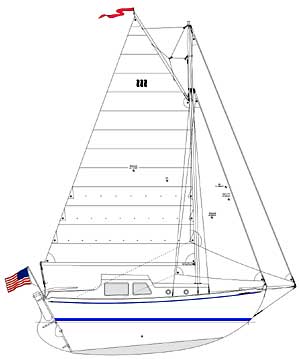| Specification | ||
|---|---|---|
| LOA | 8.065m | 26'5½" |
| LoD | 7.000m | 22'11½" |
| LWL | 6.0750m | 19'11⅛" |
| Beam | 2.355m | 7'8¾" |
| Draft | 1.045 m | 3'5⅛" |
| Displacement on dwl | 3485kg | 7683lbs |
| Ballast | 1400kg | 3086lbs |
| TM* | 4¾ tons | |
| Headroom (saloon) | 1.930m | 6'3⅞" |
| Headroom (fo'c'sle) | 1.670m | 5'5¾" |
| Mainsail | 22.275m² | 240ft² |
| 100% foretriangle | 12.340m² | 133ft² |
| Staysail | 8.000m² | 86ft² |
| Working jib | 11.000m² | 118ft² |
| Engine | 7.5kw | 10.0hp |
| EU Category B - Offshore | ||
Design No. 168 – Deben 4¾-ton 7.000m (22'11⅝") cutter
Our Deben Class designs are inspired by the original Deben 4-tonner, commissioned from W. M. Blake in 1936 and the Deben 6-tonner designed by C. C. Whisstock in 1949. Today most "Debens" are still sailing; some have been lovingly restored and I am regularly in touch with many of the current owners. We are proud to continue with the same robust, seaworthy, traditional style sailboats.The Deben 4¾ Tonner featured here is basically much the same size as the 5-tonner but designed from the beginning for wood/epoxy construction, while still retaining the long-keel, reverse-tuck sections, and other features of the original 4-tonner. Thus the design embodies proven traditional style with modern construction. By contrast, the 5-tonner is designed for traditional carvel construction on steam-bent timbers.
She is built on seven laminated ring frames, which, together with the transom, provide the basic transverse structure upon which the hull, deck and superstructure is builkt. The backbone consists of a laminated stem, wood keel and sternpost. The stem is laminated in place on the frames set up in the building jig; the wood keel is a simple straight lamination as is the sternpost.
The standard hull skin is 10mm strip planking followed by two 3mm diagonal veneers. The skin runs over the stem, wood keel and transom, so there are no rebates to bother about, though there is a rebate in the sternpost. The hull skin has a lightweight epoxy/woven glass cloth applied in with the second epoxy coating, over the whole hull and under the wood keel. An alternative hull skin would be thicker strip planking, epoxy bonded and edge nailed, with biaxial glass cloth on the exterior. The full length cast iron ballast keel is bolted on in a conventional way. Foundries able to cast large keels are not so common as they once were and shorter lead keel, together with timber deadwoods will also be available.
The original Deben 4-tonner design had a conventional short coachroof, but some were built with small doghouses, some with raised companionways, and yet others with full width cabins (so no sidedecks). We have chosen, as standard, to design the Deben 4¾-tonner with a doghouse to give standing headroom in the galley and saloon. However, it is easy enough to build the boat with a straight coachroof, without the doghouse, and we can supply alternative plans for that.
The interior layout as shown has a traditional vee-berth fo'c'sle, which is extended aft when the WC compartment forward door is closed to the WC, thus giving quite a spacious private cabin with a washbasin. The keel-stepped mainmast comes down between the berths. There are lockers and drawers under the berths.
The WC compartment stretches across the boat and is made private by closing both doors. There are good lockers outboard of the WC, and both outboard and under the washbasin unit.
The L-shaped galley has good headroom in front of the cooking stove and sink. There is a drop-flap at the aft end to give extra workspace and there are good lockers outboard of the worktop and beneath.
Aft of the galley there is an excellent quarterberth, with over a third of the length out from under the cockpit seats, which makes it easy to get into and not at all claustrophobic.
To port there is a comfortable saloon settee, which can also double up as a fourth full-size berth. We show a drop-leaf table, which when down, provides a narrow fiddled surface.
On deck there is a full length, comfortable, self-draining cockpit, separated from the companionway with a bridgedeck. The companionway itself is recessed into the doghouse to give a sheltered entranceway. The rig shown is a gaff cutter – but a gaff sloop would also work well. With the cutter rig, the staysail could be a little smaller and set on a club boom to make it self-tacking. The boat could also be bermudian rigged if wished. There are excellent watertight cockpit lockers.
The proposal plans show a Yanmar 1GM10 engine, with a conventional shaft system, set level. On the first build, the builder opted for a Yanmar 2YM15 which is set at a 5º shaft angle, and the current build plans are arranged for this. Either engine installs neatly under the bridgedeck with reasonbably good access. And both will provide good performance under power. However the beds and sternpost are slightly different between the two, so an early decision is necessary.
Click here to look at the free study plans and a list of the plans and instructions that are currently available.

